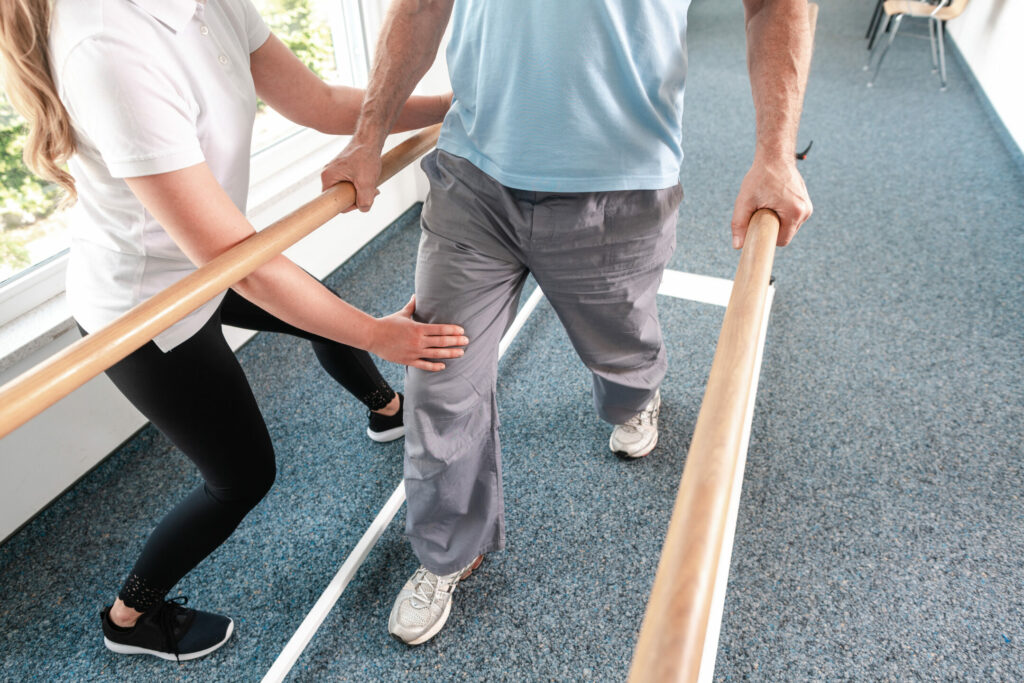Use our convenient online scheduler to book an appointment now.


Factors Influencing Knee Replacement Recovery
- Preoperative Preparation
Adequate preoperative preparation can significantly impact knee replacement recovery time. Patients are advised to perform preoperative exercises to strengthen surrounding muscles and optimize overall joint health. A healthy lifestyle, including a balanced diet and smoking cessation, can also contribute to a smoother recovery. - Surgical Technique
The surgical approach employed plays a pivotal role in determining recovery time. Advancements in surgical techniques, such as minimally invasive procedures, often result in quicker recovery periods. Patients are encouraged to discuss these options with their orthopedic surgeon to tailor the approach to their needs. - Postoperative Rehabilitation
Postoperative rehabilitation is a cornerstone of knee replacement recovery. Physical therapy (PT) is integral in restoring range of motion, strength, and flexibility. Doing prescribed PT exercises diligently can accelerate healing and enhance overall joint function.
Physical Therapy for Knee Replacement Recovery
Physical therapy is a customized rehabilitation program designed to address specific postoperative challenges and facilitate a swift return to normal activities. In this video viewers gain valuable insights into potential pitfalls to avoid during their recovery journey.
Here’s how PT contributes to knee replacement recovery:
- Early Mobilization
Physical therapists guide patients through gentle exercises to promote early mobilization. This aids in preventing stiffness, improving circulation, and expediting the healing process. - Muscle Strengthening
PT programs include targeted exercises to strengthen muscles around the knee joint. Building muscle strength is crucial for supporting the replaced joint and preventing future complications. - Range of Motion Exercises
Restoring the full range of motion is a primary objective of PT. Therapists employ techniques to gradually increase flexibility, ensuring the patient can comfortably bend and extend the knee. - Pain Management
PT also incorporates pain management strategies, combining hands-on techniques with exercises to alleviate discomfort. This holistic approach enhances patients’ ability to participate in their recovery actively.
Conclusion
Recovery from knee replacement surgery is a multifaceted process influenced by various factors. Patients contemplating or preparing for knee replacement should be aware of the importance of preoperative preparation, the impact of surgical techniques, and the role of postoperative rehabilitation, particularly physical therapy. Engaging in a comprehensive rehabilitation program, including regular PT sessions, is pivotal for achieving optimal outcomes and minimizing knee replacement recovery time.
A well-informed approach, coupled with a commitment to preoperative and postoperative protocols, empowers patients to successfully navigate the path to recovery, allowing them to regain mobility and resume a more active lifestyle post-knee replacement surgery. If you or a loved one are seeking treatment for knee replacement surgery, request an appointment at Town Center Orthopaedics to begin your journey to feel better, move better, and be better.
Join our Mailing List
TCO provides patients with orthopedic problems the trusted resources and patient-centered advice they need to “Feel Better. Move Better. Be Better.”
© 2024 Town Center Orthopaedics | All Rights Reserved